Do Eagles Eat Lizards? It’s a question that has captivated scientists and nature enthusiasts alike, delving into the fascinating world of these majestic birds of prey.
In this comprehensive article, we analyze the hunting habits and diet of eagles, with a specific focus on their potential consumption of lizards.
Join us on a journey of discovery as we explore the intricate relationship between eagles and lizards, examining their interactions and the implications for both species.
Get ready to uncover the truth and gain a deeper understanding of whether eagles truly include lizards in their diet.
Table of Contents
- 1 Key Takeaways
- 2 Do Eagles Eat Lizards
- 3 The Hunting Habits of Eagles
- 4 The Diet of Eagles
- 5 Eagle’s Predatory Techniques
- 6 Are Lizards a Part of an Eagle’s Diet?
- 7 Factors that Influence an Eagle’s Diet
- 8 Other Prey Preferences of Eagles
- 9 The Importance of a Varied Diet for Eagles
- 10 Interactions Between Eagles and Lizards
- 11 Eagle Conservation and Preservation Efforts
- 12 The Fascinating World of Eagles
- 13 Conclusion: Understanding the Relationship Between Eagles and Lizards
- 14 Frequently Asked Questions
- 14.1 How many different species of lizards do eagles typically eat?
- 14.2 Do eagles prefer to hunt lizards in a specific habitat or location?
- 14.3 Are there any specific times of the year when eagles are more likely to hunt lizards?
- 14.4 Do eagles have any adaptations or specific techniques for capturing and consuming lizards?
- 14.5 Are there any negative consequences for eagle populations if their lizard prey becomes scarce?
- 15 Author
Key Takeaways
- Eagles have exceptional eyesight and hunting techniques that allow them to capture and kill prey, including lizards.
- Lizards play a significant role in shaping the distribution and movement of eagles, as their migration patterns coincide with the availability of lizards.
- Factors like habitat, prey abundance, competition, and seasonal variations influence an eagle’s diet, which includes lizards, rabbits, hares, insects, invertebrates, and carrion.
- Eagles rely on a diverse range of prey species, including lizards, for optimal health and survival, and lack of dietary diversity can lead to reduced reproductive success and increased susceptibility to disease and predation among eagles.
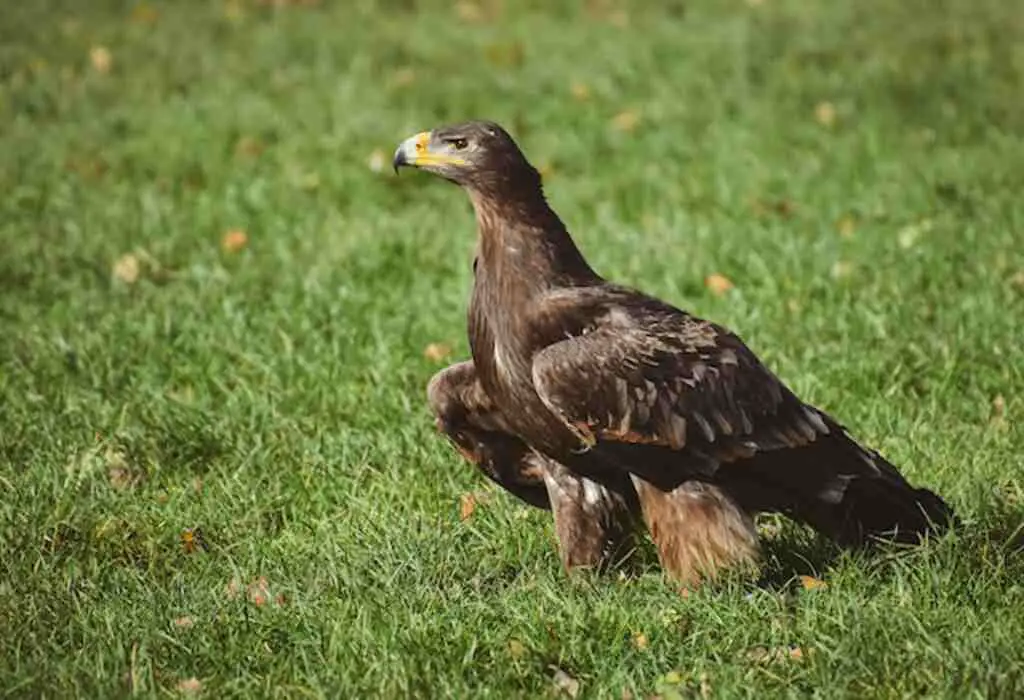
Do Eagles Eat Lizards
Yes, eagles do eat lizards. As opportunistic predators, eagles have a varied diet that includes small reptiles like lizards.
Lizards serve as a supplemental food source for eagles, especially when other prey is scarce. Their hunting prowess allows them to capture and consume lizards as part of their diverse diet.
The Hunting Habits of Eagles
The hunting habits of eagles involve a diverse range of prey, including lizards. Eagle hunting techniques are highly adaptable, allowing them to capture various types of prey.
Factors influencing eagle diet include the availability of food, habitat, and competition with other predators.
Eagles are known for their exceptional eyesight, which enables them to spot potential prey from great distances.
Once a prey item is located, eagles will utilize their powerful talons and beak to capture and kill it. They may swoop down from the sky or perch on a high vantage point to observe and ambush their prey.
Lizards are one of the many prey items that eagles will hunt and consume. This diverse hunting behavior allows eagles to maintain a balanced diet and adapt to different environments.
Moving on to the diet of eagles, their consumption of lizards plays a significant role in their overall feeding habits.
The Diet of Eagles
One of the main components of an eagle’s diet includes small reptiles, such as lizards. Eagles are opportunistic hunters and will prey on a variety of animals, including mammals, birds, and reptiles.
Lizards are particularly attractive to eagles due to their small size and vulnerability.
Eagles use their keen eyesight and powerful talons to capture and kill lizards with precision.
They are known to inhabit a wide range of habitats, including forests, grasslands, and mountains, where they can find an abundance of lizards.
Additionally, eagle migration patterns often coincide with the availability of lizards in different regions. This suggests that lizards play a significant role in shaping the distribution and movement of eagles.
Understanding the diet and habitat preferences of eagles provides valuable insights into their ecological role and conservation needs.
Moving forward, it is essential to explore the predatory techniques employed by eagles to secure their prey.
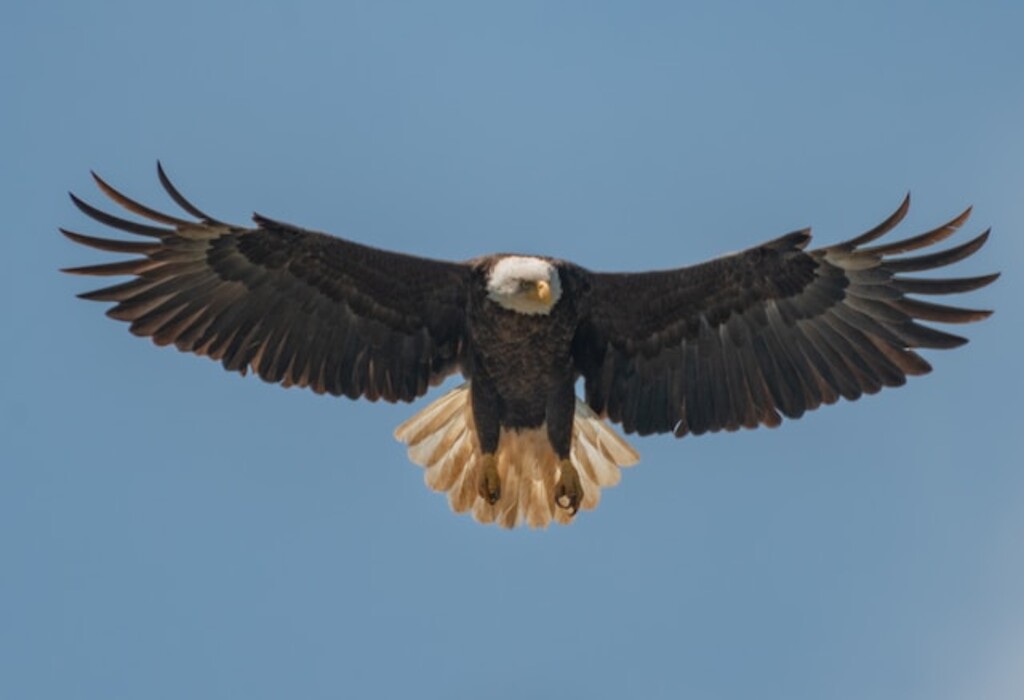
Eagle’s Predatory Techniques
Eagle’s predatory techniques involve the utilization of their sharp talons and exceptional eyesight to swiftly and accurately capture their prey, showcasing their impressive hunting prowess.
These techniques are the result of millions of years of evolution, allowing eagles to excel in their role as apex predators.
The following are three key elements of an eagle’s hunting strategy:
- Ambush: Eagles often perch on high vantage points, patiently waiting for an opportunity to strike. When a suitable prey is spotted, the eagle swiftly descends from above, taking its victim by surprise.
- Speed: Once in flight, eagles are capable of reaching incredible speeds, enabling them to chase down agile prey. This speed also allows them to cover large distances in search of food.
- Precision: Eagles have exceptional eyesight, which allows them to spot even the smallest movement from a considerable distance. This keen vision enables them to accurately target their prey, ensuring a successful capture.
With such effective hunting techniques, eagles are known to prey on a wide range of animals, including small mammals, birds, and reptiles.
But are lizards a part of an eagle’s diet?
Are Lizards a Part of an Eagle’s Diet?
Lizards are often targeted by eagles due to their agile nature and small size, making them an attractive prey option.
Eagles exhibit various predatory behaviors and hunting techniques when targeting these reptiles.
They employ their exceptional vision to spot lizards from great distances, relying on their keen eyesight to detect even the slightest movement.
Once a potential prey is identified, eagles swiftly swoop down from their elevated perches, utilizing their powerful talons to grasp the lizard firmly.
With their strong beaks, they deliver a fatal blow to immobilize the prey.
Lizards form a significant part of an eagle’s diet, providing them with a source of protein and nutrients.
This predatory behavior demonstrates the adaptability and versatility of eagles in capturing their preferred prey.
Factors that influence an eagle’s diet will be discussed in the subsequent section.
Factors that Influence an Eagle’s Diet
Numerous factors significantly impact the dietary preferences and choices of eagles, shaping their consumption patterns and prey selection. These factors include:
- Habitat: Eagles tend to inhabit diverse environments, such as forests, mountains, and coastal areas. The availability of prey in these habitats influences their diet.
- Prey abundance: The abundance of certain prey species, including lizards, affects the eagles’ feeding habits. Higher abundance may lead to increased consumption.
- Prey size: Eagles typically prefer prey that is within a specific size range. Lizards, being smaller in size, may be less preferred compared to larger prey items.
- Competition: Interactions with other predators, such as other bird species or mammals, can also influence an eagle’s diet. Competition for resources may result in the selection of alternative prey.
- Seasonal variations: The availability of prey can vary throughout the year, affecting an eagle’s diet accordingly.
These factors collectively shape the dietary choices of eagles, including their interactions with lizards.
Moving forward, it is important to explore the other prey preferences of eagles.
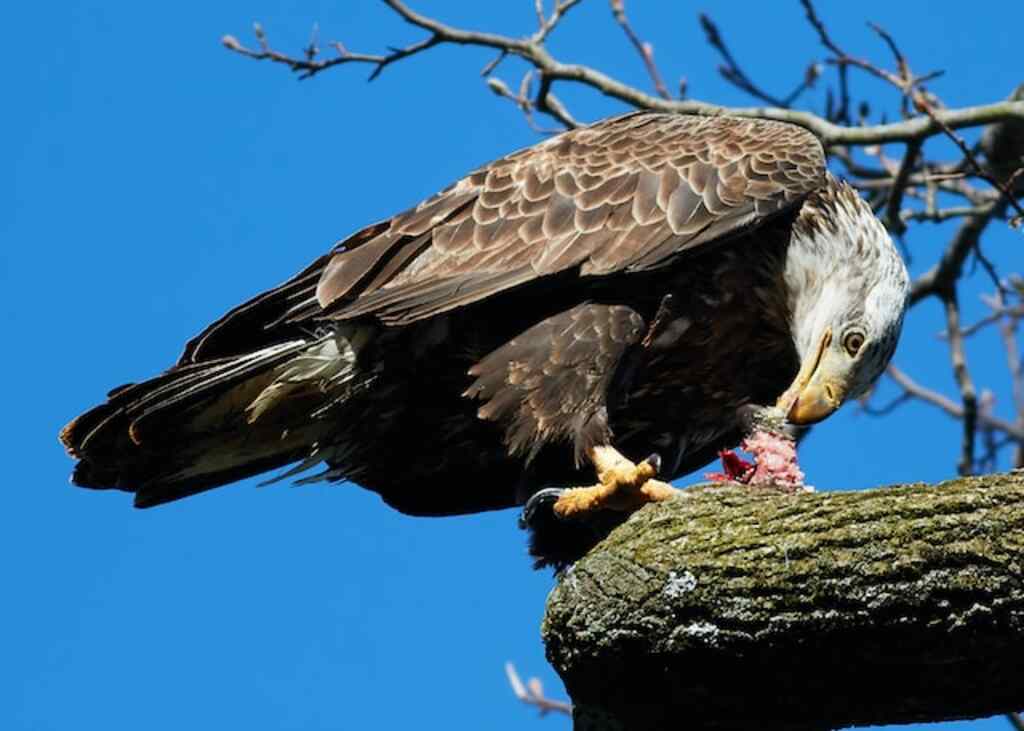
Other Prey Preferences of Eagles
This discussion will focus on other prey preferences of eagles, including rabbits and hares, insects and invertebrates, and carrion and scavenging.
Eagles are known to prey on rabbits and hares, which provide a significant source of protein and nutrients.
Additionally, eagles also consume a variety of insects and invertebrates as part of their diet, which can be an important food source, especially during certain seasons.
Furthermore, eagles are opportunistic feeders and will scavenge on carrion, such as dead animals, which can provide a readily available source of food.
Rabbits and hares
Rabbits and hares, being herbivorous mammals belonging to the order Lagomorpha, have a diverse range of dietary preferences and are an important part of the ecosystem.
When it comes to the eagle’s predatory techniques, these small mammals are not exempt from their keen eyes and powerful talons.
Eagles can effectively hunt rabbits and hares due to their exceptional vision and agility in flight.
Here are three fascinating facts about the interaction between eagles and these lagomorphs:
- Hunting Technique: Eagles employ a combination of stealth and speed to capture rabbits and hares. They often approach their prey from above, diving swiftly to strike with their sharp talons.
- Size Matters: Eagles usually target juvenile or smaller-sized rabbits and hares, as larger individuals can be more challenging to overpower. This preference ensures a higher success rate for the predator.
- Strategic Locations: Eagles often hunt rabbits and hares in open areas such as meadows or grasslands, where these lagomorphs are more exposed and easier to detect.
Transitioning to the subsequent section about ‘insects and invertebrates,’ it is worth exploring the diverse range of prey that eagles consume.
Insects and invertebrates
In the realm of entomology, the dietary preferences of eagles encompass a vast array of insect species, ranging from minute beetles to colossal butterflies, showcasing their remarkable adaptability and voracious appetite.
Eagle feeding behavior is characterized by their ability to swoop down from great heights and snatch insects mid-flight.
They also scan the ground for crawling insects and snatch them up with their sharp talons.
However, the availability of insects for eagles to consume is heavily influenced by climate conditions.
Changes in temperature and precipitation patterns can impact insect populations, which in turn affects the food source for eagles.
For instance, in warmer and drier climates, there may be a decrease in insect abundance, forcing eagles to search for alternative food sources.
This demonstrates the intricate relationship between eagle feeding behavior and the environment.
Transitioning into the subsequent section about ‘carrion and scavenging’, eagles also rely on the availability of carrion as a food source.
Carrion and scavenging
Carrion, the decaying flesh of dead animals, serves as a crucial source of sustenance for eagles, highlighting their ability to adapt and thrive in diverse ecosystems.
Eagles play an important ecological role as scavengers, as they efficiently consume carrion, preventing the spread of disease and recycling nutrients back into the environment.
When a carcass is discovered, eagles quickly descend upon it, tearing off chunks of meat with their sharp beaks.
The decomposition of carrion is a complex process, involving the activity of bacteria, fungi, and other decomposers.
As the flesh breaks down, it releases nutrients that are essential for the growth of plants and other organisms.
This ecological service provided by eagles helps to maintain the balance of ecosystems by ensuring the efficient recycling of organic matter.
Transitioning to the subsequent section, the importance of a varied diet for eagles lies in their ability to obtain essential nutrients from different food sources.
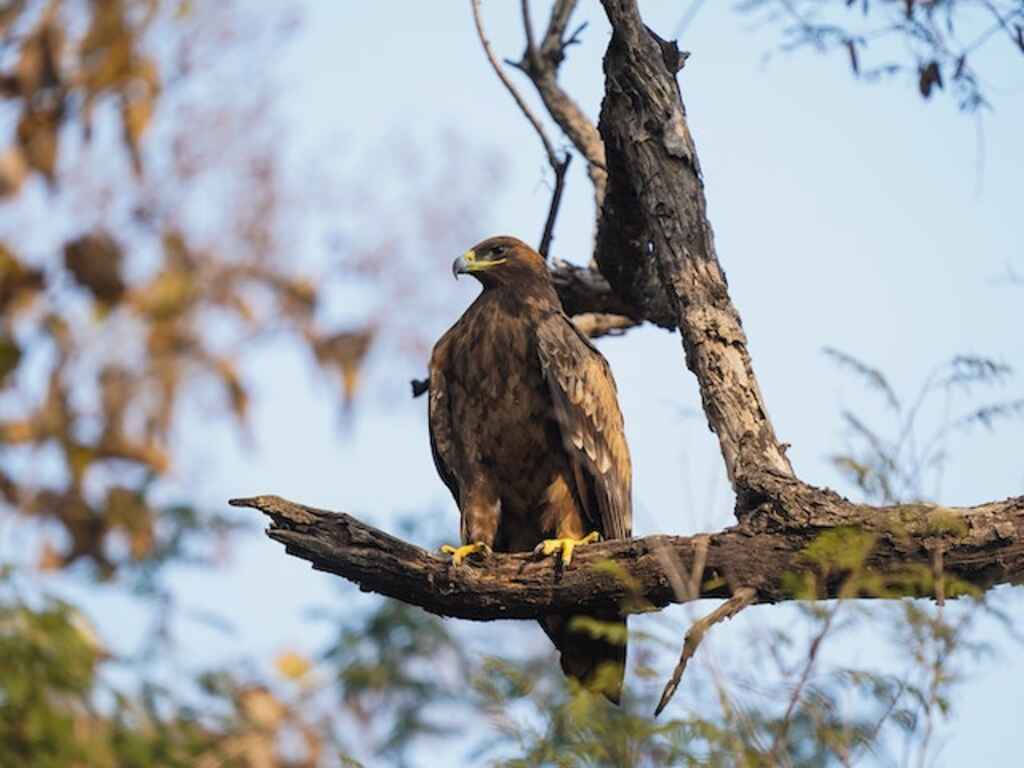
The Importance of a Varied Diet for Eagles
To ensure optimal health and survival, eagles rely on a diverse range of prey species, exemplifying the importance of a varied diet in their natural habitat.
The importance of dietary diversity for eagles cannot be overstated, as it directly impacts their population dynamics.
A varied diet provides eagles with essential nutrients and prevents the overexploitation of any single prey species.
Studies have shown that a lack of dietary diversity can lead to reduced reproductive success and increased susceptibility to disease and predation among eagles.
Furthermore, a varied diet allows eagles to adapt to changes in their environment and maintain a stable population size.
In the subsequent section, we will explore the interactions between eagles and lizards, shedding light on their feeding habits and the potential role of lizards in the eagle’s diet.
Interactions Between Eagles and Lizards
The presence of lizards in the diet of eagles contributes to their overall dietary diversity, with a study showing that lizards make up approximately 10% of the eagles’ prey composition.
Interactions between eagles and lizards involve specific hunting strategies employed by the eagles.
Eagles use their keen eyesight to spot lizards from a distance, and then employ a swift and precise attack to capture their prey.
They often swoop down from above, using their sharp talons to grasp the lizard tightly.
In terms of the impact of lizards in the diet of eagles, their inclusion provides essential nutrients such as proteins and vitamins, contributing to the overall health and survival of the eagle population.
Understanding these interactions is crucial for eagle conservation and preservation efforts, which aim to protect both the eagles and their diverse prey.
Eagle Conservation and Preservation Efforts
Eagle conservation and preservation efforts play a crucial role in safeguarding the biodiversity and ecological balance of their habitats.
To address the eagle population decline and protect their habitats, various initiatives have been implemented worldwide.
These conservation efforts focus on habitat conservation, which involves preserving and restoring key areas where eagles thrive.
Conservationists work towards creating protected areas, such as national parks and wildlife reserves, to ensure the long-term survival of eagle populations.
Additionally, efforts are made to mitigate threats to eagles, such as habitat loss due to human activities, pollution, and illegal hunting.
By promoting sustainable practices and raising awareness about the importance of eagle preservation, these initiatives aim to ensure the continued existence of these magnificent birds and their intricate role in ecosystems worldwide.
Transitioning into the subsequent section, it is essential to explore the fascinating world of eagles, which encompasses their hunting strategies, mating behaviors, and remarkable adaptations.

The Fascinating World of Eagles
With a wingspan that can reach up to 7 feet, the Harpy Eagle is known to be one of the largest and most powerful birds of prey in the world.
This magnificent creature exhibits fascinating eagle behavior and has unique nesting habits. Eagles are known for their impressive hunting skills, and the Harpy Eagle is no exception.
It primarily preys on large mammals such as monkeys and sloths, demonstrating its strength and agility in capturing its prey.
Additionally, eagles are known for their intricate nesting habits. They build their nests high up in trees, using sticks and branches to create a sturdy foundation.
These nests are often reused and expanded upon each year. Understanding the relationship between eagles and lizards will shed light on the intricate dynamics of predator-prey interactions.
Conclusion: Understanding the Relationship Between Eagles and Lizards
Understanding the intricate dynamics of predator-prey interactions between eagles and lizards unveils the intricate web of ecological relationships in the natural world.
Eagles, being top predators, employ various hunting techniques to capture and consume lizards. They primarily rely on their keen eyesight and aerial agility to locate and target their prey.
Once an eagle spots a lizard, it swoops down with great speed and precision, using its sharp talons to snatch the lizard from the ground or a tree branch.
The eagle’s strong beak then allows it to tear apart the lizard’s flesh and consume it.
These interactions between eagles and lizards play a crucial role in maintaining the balance of ecosystems.
By controlling lizard populations, eagles prevent overgrazing and help maintain biodiversity.
Additionally, the consumption of lizards by eagles contributes to nutrient cycling and energy flow within the ecosystem.
Overall, studying the relationship between eagles and lizards provides valuable insights into the complex dynamics of predator-prey interactions and highlights the crucial role of eagles in ecosystem functioning.
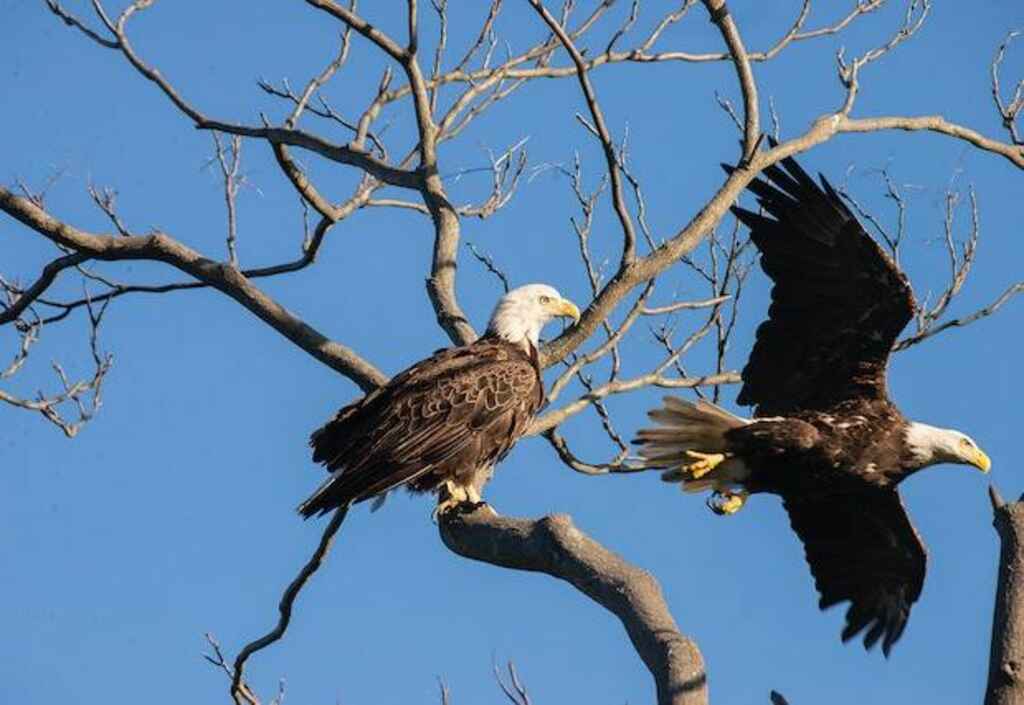
Frequently Asked Questions
How many different species of lizards do eagles typically eat?
Eagles consume a variety of prey besides lizards, including fish, small mammals, and birds. The presence of eagles in an ecosystem can affect the population dynamics of lizards by exerting predation pressure, potentially leading to fluctuations in lizard abundance.
Do eagles prefer to hunt lizards in a specific habitat or location?
Eagles exhibit a preference for hunting lizards in varied habitats, such as open grasslands and forested areas. However, the impact of lizard scarcity on eagle populations remains a critical concern, highlighting the need for conservation efforts to maintain ecosystem balance.
Are there any specific times of the year when eagles are more likely to hunt lizards?
Peak hunting seasons for eagles can vary depending on the specific species and geographical location. Factors influencing lizard hunting patterns by eagles include prey availability, breeding cycles, and migration patterns. Further research is needed to determine specific timings in different regions.
Do eagles have any adaptations or specific techniques for capturing and consuming lizards?
Eagles employ various hunting techniques to capture lizards. For instance, they may use their keen eyesight to spot lizards from high above and then swoop down with great speed and precision to snatch their prey. Lizards, on the other hand, have adaptations such as camouflage and agility to evade eagle predation.
Are there any negative consequences for eagle populations if their lizard prey becomes scarce?
Negative consequences for eagle populations may include decreased reproductive success and population decline. Conservation efforts for eagle populations should focus on habitat preservation, prey management, and reducing threats such as pollution and habitat loss.


